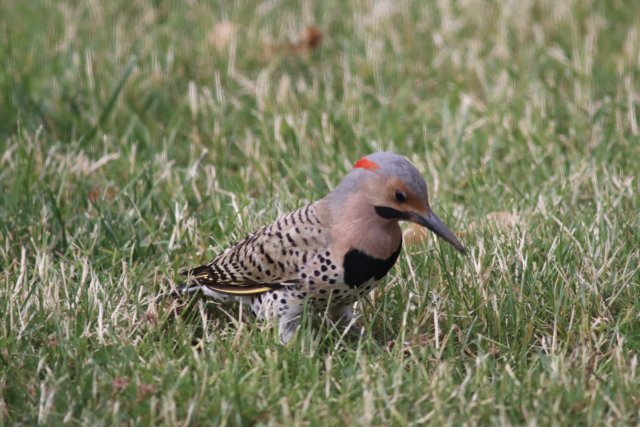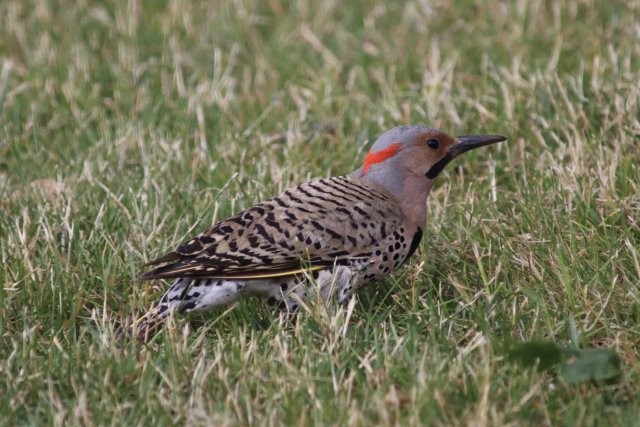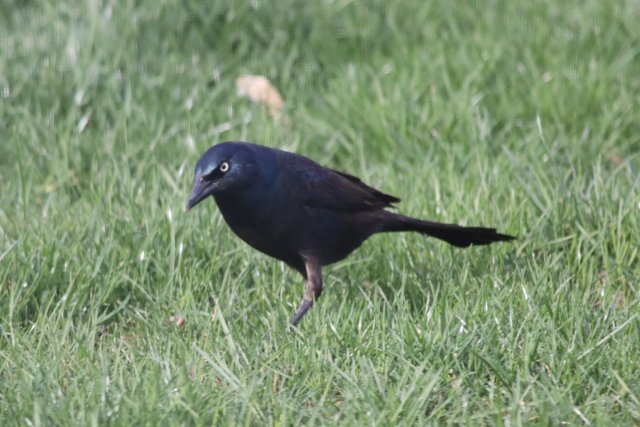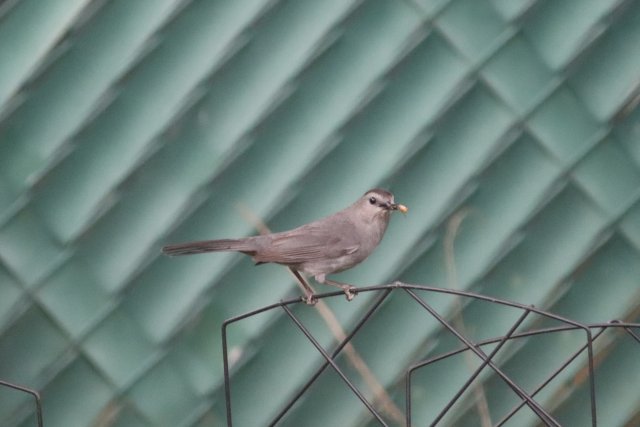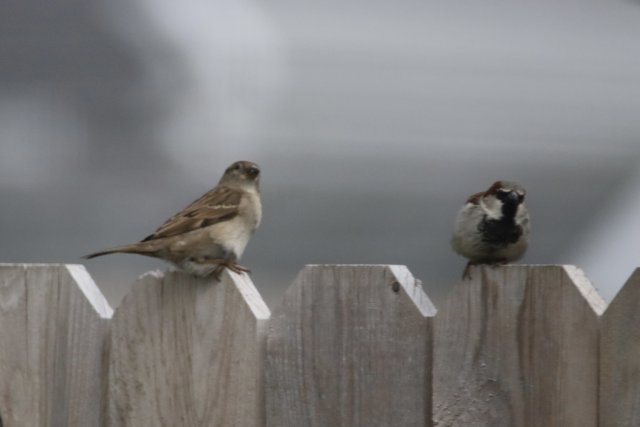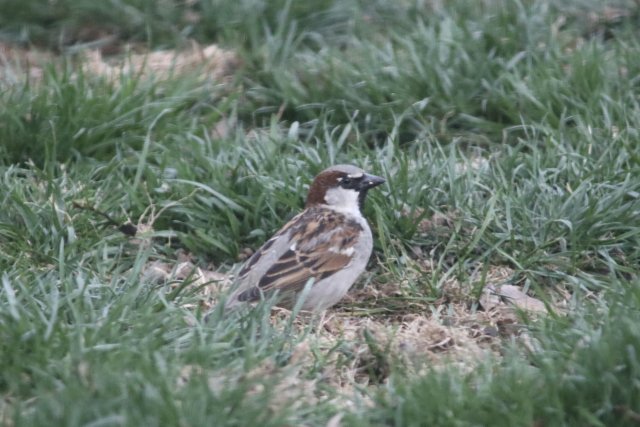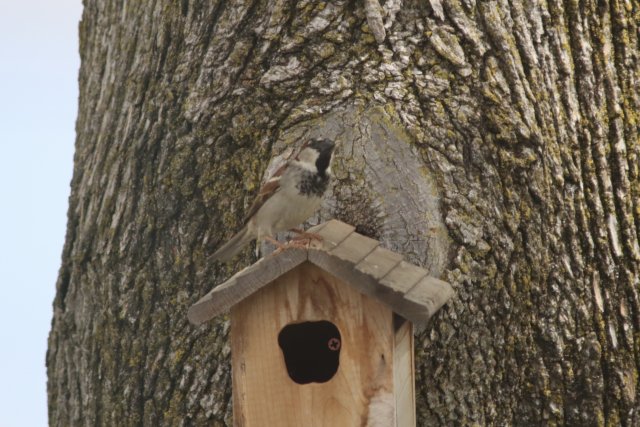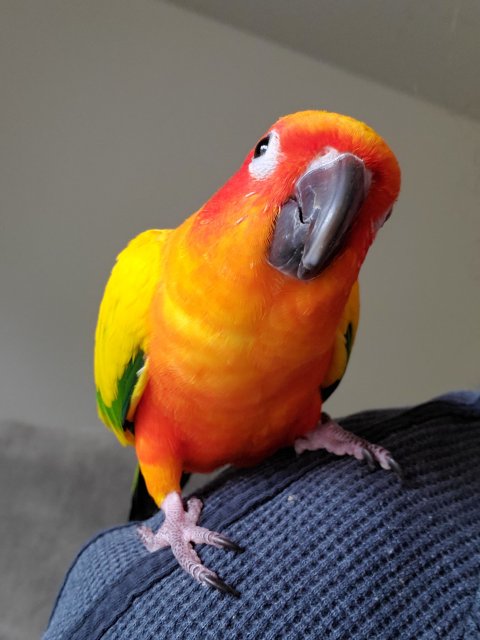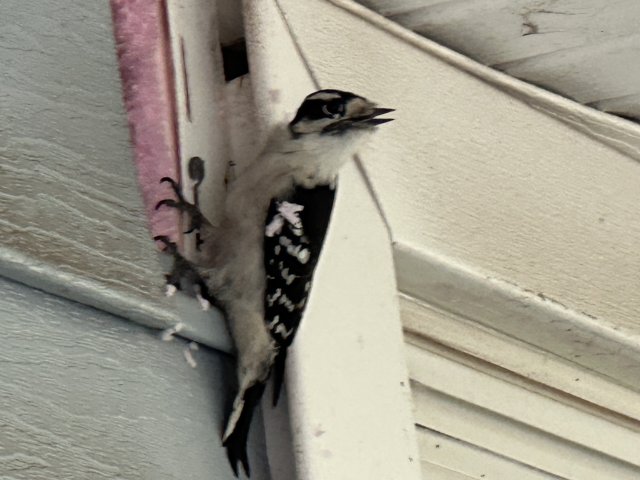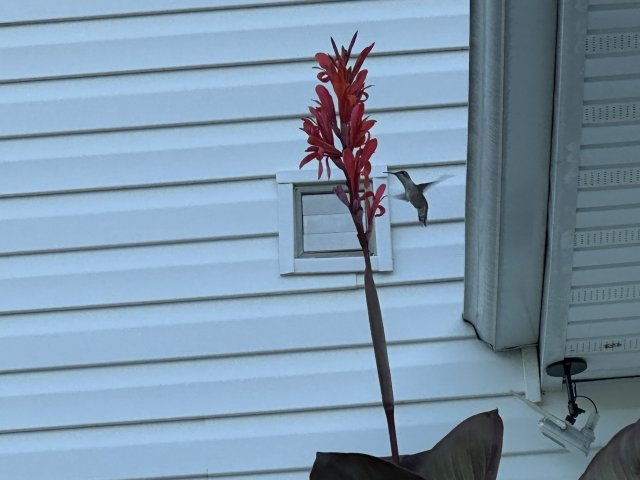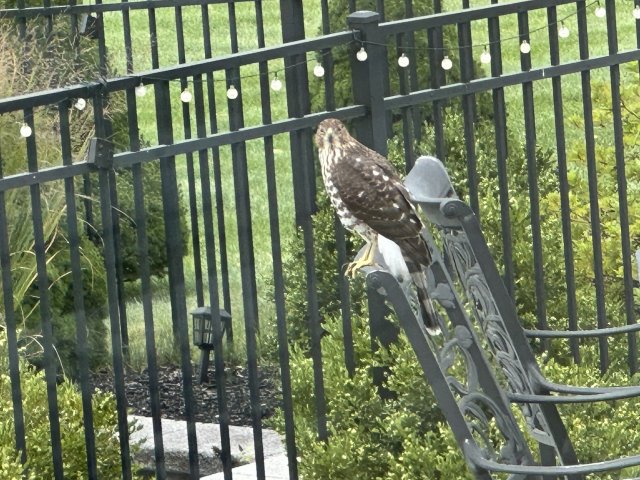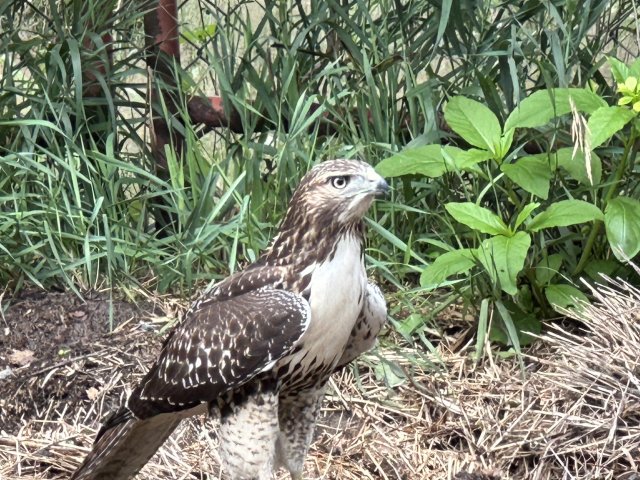I've been a birder since childhood; not sure which came first for me, birding or aquariums, but both started in the single-digit age range. My wife enjoys it very casually; she likes seeing and hearing birds in the yard, and enjoys pleasant day-trips in good weather in search of rarities. I am a bit more involved, but still pretty casual compared to the real hard-core birders. I keep a life-list, and also a property-list for my own land, a listing of all bird species seen or heard on my own property. I have the list from my previous property in Ontario, where I lived for about 12 years, and am now keeping a second such property-list for my current home in Manitoba, where we have now been for just over 12 years.
Interestingly, the total number of species seen on my land in that time period in Ontario was 146. In a similar time-span, the total is 143 for my current property. There is much overlap in the two lists, and of course there are some species that were seen only here or only there as well. I'm not much of a record-keeper; if I want to look up a specific interesting observation I made in the past, I usually just search through the archived messages on a local birding website. Unlike dyed-in-the-wool birders, I can't tell you the earliest date that a Robin has appeared in spring, or exactly how many Barn Swallows were fledged from the colony in the eaves of the shed last year. It's a fun thing for me, don't want it turning into a tedious chore.
My wife is a better record keeper, but with a somewhat different focus. She doesn't count birds or species or individuals...but her inherently thrifty and mathematical bent leads her to constantly update me with how much money we spend on birdseed! When we first started feeding birds on our land in Ontario, we bought a 15-pound bag of cheapo mixed seed at the grocery store and it lasted for months. But...as you feed them...more of them start to show up...eating more food...which necessitates buying more and more of it...it's a vicious cycle!
Today I will be heading into town to pick up another 50-lb bag of Black Oil Sunflower seeds. We will be going through one such bag about every two weeks throughout the winter, served up in a half-dozen birdfeeders around the yard. Some are little commercially-produced feeders; others are DIY wooden jobs that hold about 30 pounds of seed per filling. All are crowded with winter birds. We also have a couple of XXL suet feeders, filled with the fat from last year's deer. At the rate it is going, I may have to get more fat or suet before the end of the winter to keep the woodpeckers, nuthatches, chickadees and jays satisfied. We also use much smaller quantities of dried fruits and/or mealworms periodically, to provide for specific oddball birds that show up looking for a handout.
In Ontario, we had a vulture feeder, consisting of a 4x4-foot sheet of plywood mounted at the top of a 10-foot pole. It kept the road-kills I would occasionally come home with (fresh only!) off the ground so that they wouldn't be stolen by coyotes. I'm thinking about building another one here; I already have an owl/kestrel/shrike feeder that I keep supplied with mice and voles caught in traps in my outbuildings.
We have nest-boxes situated for Kestrels, smaller owls (Screech and Saw-whet) and Flickers; I also just built another dozen Bluebird and Tree Swallow boxes, which will bring the total of those on our place up around 30. They're all carefully designed, correctly sized and proportioned for the target species, with the correct size of entry holes and mounted at optimum heights. We've had excellent success with Tree Swallows, as well as decent numbers of fledged Kestrels and Bluebirds.
Birding is a lot like aquarium-keeping in some ways. It can be made as simple or as complicated as one wishes; it can be done expensively or very cheaply; it allows for a great deal of DIY for those who enjoy that; and it's a way to connect with nature. Like fish-keeping...or, for that matter, hunting and fishing...it gives one the chance to actually participate in the natural process rather than merely sitting on the sidelines as an observer.
How about it? Any other backyard birders and/or closet naturalists in the MFK ranks? I can't be the only one.
Interestingly, the total number of species seen on my land in that time period in Ontario was 146. In a similar time-span, the total is 143 for my current property. There is much overlap in the two lists, and of course there are some species that were seen only here or only there as well. I'm not much of a record-keeper; if I want to look up a specific interesting observation I made in the past, I usually just search through the archived messages on a local birding website. Unlike dyed-in-the-wool birders, I can't tell you the earliest date that a Robin has appeared in spring, or exactly how many Barn Swallows were fledged from the colony in the eaves of the shed last year. It's a fun thing for me, don't want it turning into a tedious chore.
My wife is a better record keeper, but with a somewhat different focus. She doesn't count birds or species or individuals...but her inherently thrifty and mathematical bent leads her to constantly update me with how much money we spend on birdseed! When we first started feeding birds on our land in Ontario, we bought a 15-pound bag of cheapo mixed seed at the grocery store and it lasted for months. But...as you feed them...more of them start to show up...eating more food...which necessitates buying more and more of it...it's a vicious cycle!
Today I will be heading into town to pick up another 50-lb bag of Black Oil Sunflower seeds. We will be going through one such bag about every two weeks throughout the winter, served up in a half-dozen birdfeeders around the yard. Some are little commercially-produced feeders; others are DIY wooden jobs that hold about 30 pounds of seed per filling. All are crowded with winter birds. We also have a couple of XXL suet feeders, filled with the fat from last year's deer. At the rate it is going, I may have to get more fat or suet before the end of the winter to keep the woodpeckers, nuthatches, chickadees and jays satisfied. We also use much smaller quantities of dried fruits and/or mealworms periodically, to provide for specific oddball birds that show up looking for a handout.
In Ontario, we had a vulture feeder, consisting of a 4x4-foot sheet of plywood mounted at the top of a 10-foot pole. It kept the road-kills I would occasionally come home with (fresh only!) off the ground so that they wouldn't be stolen by coyotes. I'm thinking about building another one here; I already have an owl/kestrel/shrike feeder that I keep supplied with mice and voles caught in traps in my outbuildings.
We have nest-boxes situated for Kestrels, smaller owls (Screech and Saw-whet) and Flickers; I also just built another dozen Bluebird and Tree Swallow boxes, which will bring the total of those on our place up around 30. They're all carefully designed, correctly sized and proportioned for the target species, with the correct size of entry holes and mounted at optimum heights. We've had excellent success with Tree Swallows, as well as decent numbers of fledged Kestrels and Bluebirds.
Birding is a lot like aquarium-keeping in some ways. It can be made as simple or as complicated as one wishes; it can be done expensively or very cheaply; it allows for a great deal of DIY for those who enjoy that; and it's a way to connect with nature. Like fish-keeping...or, for that matter, hunting and fishing...it gives one the chance to actually participate in the natural process rather than merely sitting on the sidelines as an observer.
How about it? Any other backyard birders and/or closet naturalists in the MFK ranks? I can't be the only one.





